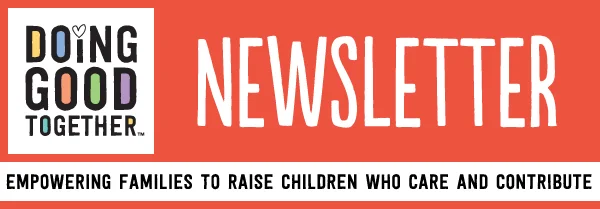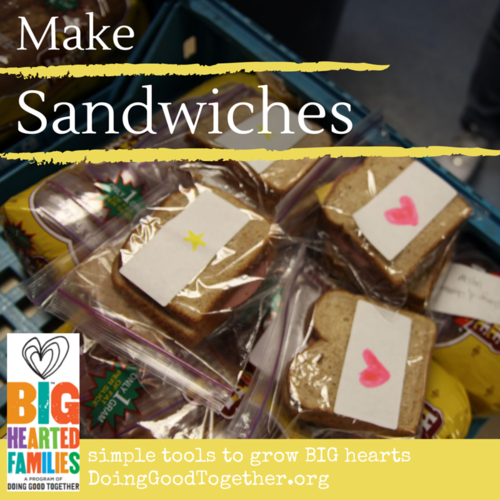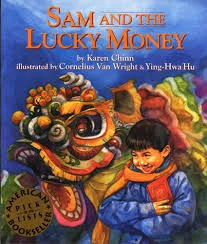GENEROSITY: THE MISSING PIECE OF MONEY LITERACY
Plenty of experts have written about raising financially literate children, but surprisingly few mention the important role of generosity and sharing. And it matters. A recent study found that when 4-year-olds acted altruistically, their nervous system response was associated with better physical health, behavior and social skills. (Interestingly, the study also found that children of wealthy parents tended to be less generous than children from less wealthy families.) Fortunately, no matter what your family income, it's easy to establish fun, meaningful family habits that teach children about giving.
-Jenny Friedman, Executive Director
PRACTICE & PROMOTE GENEROSITY
Make a Difference.....
Here are ideas for encouraging generosity -- that essential, and too-often-overlooked, aspect of growing money-sensible kids.
Model generosity... and explain it. Walking the talk is always a powerful teaching tool. In addition, discuss the why behind your generosity. Explain your reasons for donating money to an earthquake relief fund, giving food to a person on the street, putting coins in an expired parking meter, or making soup for an ailing neighbor. Take such opportunities to share your values.
Instill a giving habit from the start. When your child is old enough to receive money as a gift or allowance, set the expectation that part is to be shared. Make a "giving box" with your children, have them contribute a portion of their money to a family charity fund, or begin a share/save/spend tradition. Emphasize that it's the habit of giving that matters, not the amount.
Let children be decision-makers. When kids are little, describe three charities (e.g., one focused on animals, one on hunger relief, and one on children who are ill), then talk about which they'd like to support and why. As they get older, chat about their passions and help them research nonprofits that share them. Or start an informal mini-family foundation: Everybody contributes and at year's end jointly decides where the funds will go.
Show children the fruits of their giving. It's fun to choose nonprofits where children can see the tangible impact their coins have made. That might mean selecting a local charity where they can visit or even volunteer. Or purchasing items (e.g., school supplies, baby care items, socks) from a nonprofit's wish list. Another option: use the funds to buy supplies, then create items people need: fleece for blankets, ingredients for sandwiches, or snacks for breakfast bags.
Deliver your donations together. Try to deliver each donation in person. If possible, get a tour or chat with a staffer about what the nonprofit does and how your donation will help. If the charity is not local, suggest that your child attach a note to the donation explaining why s/he picked that particular charity and expressing thanks for its good work. This will help deepen your child's understanding of charitable giving and why it matters.
CONVEY THE GIVING MESSAGE
Talk About It.....
Take time to reflect on sharing money. Here are questions to jumpstart the conversation.
- Is it hard to give away your money sometimes? Why? What might make it easier?
- What are some ways we can choose which charities to donate to?
- What causes are most important to you? How can you support those causes?
- If you had $1,000 and had to give it away, where would you give it?
- When you donate your money, is it important that the recipient express gratitude? Why or why not?
- Would you be interested in organizing a fundraiser so you could give even more to the charities or causes you care about? If so, what kind of fundraiser do you think you could organize?
Learn About It.....
These books provide insights into the science of kindness and compassion.
Sam and the Lucky Money by Karen Chinn. Ages 5-8. A charming story about a boy who gets "lucky money" for his birthday and ventures into Chinatown to look for the best way to spend it.
Those Shoes by Maribeth Boelts. Ages 5-8. Jeremy wants a pair of shoes just like everyone else has, but his grandmother thinks he must learn to separate his needs from his wants.
The Giving Book: Open the Door to a Lifetime of Giving by Ellen Sabin. This wonderful book helps elementary-school kids understand and set charitable priorities. It is one part journal, one part workbook, and one part cheerleader for doing good.
INSPIRATION
Nigerian saying: It is the heart that does the giving; the fingers only let go.






